Throughout history, humans have always been curious about the exact count of stars that exist in the sky. It is a natural instinct to explore and discover, so it is no wonder that we want to unravel this cosmic riddle.
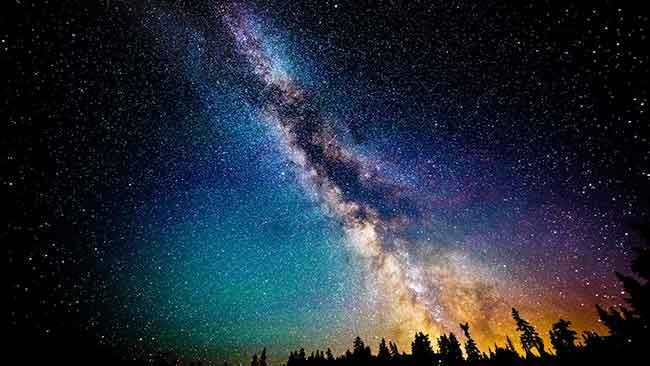
Throughout history, astronomers have diligently recorded the marvels they witnessed, leaving behind records and tables filled with calculations.
The tale of the celestial bodies
It was only in the 20th century that humanity began to grasp some of the principles governing stars and their characteristics. However, even with these discoveries, many questions remain unanswered. Scientists are perplexed as to why their mathematical calculations are constantly being challenged by new findings.
In the 4th century BC, Aristotle attempted to prove that the stars were stationary, as they had long been used by sailors as navigational aids. There was also a prevailing belief in a celestial sphere where the gods resided.
Starting from the 16th century, the progress became more productive. Giordano Bruno unveiled the revelation to humanity that stars are celestial bodies resembling the Sun. In 1596, the world witnessed the discovery of a variable star, and in 1650, a binary star system.
Their research and exploration were carried forward by Kant, Lomonosov, Belopolsky, and numerous other scientists. Step by step, they delved into the essence of stars, their movements, and their abundance.
What is the number of stars visible in the sky without the aid of equipment?
Around two thousand years ago, Hipparchus created the first catalog of stars, demonstrating the ability to classify stars based on their brightness. Despite the absence of advanced equipment at that time, Hipparchus managed to observe and document stars up to the 6th magnitude, a dataset that is still relevant today.
Regardless of location, without any equipment, we can observe approximately 5,000 stars simply by looking up. However, it is important to take into account that some stars may be obscured by the horizon, resulting in a count of only 2,000 stars.
In highly populated cities, the opportunity to witness such celestial beauty is limited. Many city dwellers may not even notice the presence of stars, as only the brightest few are visible to them.
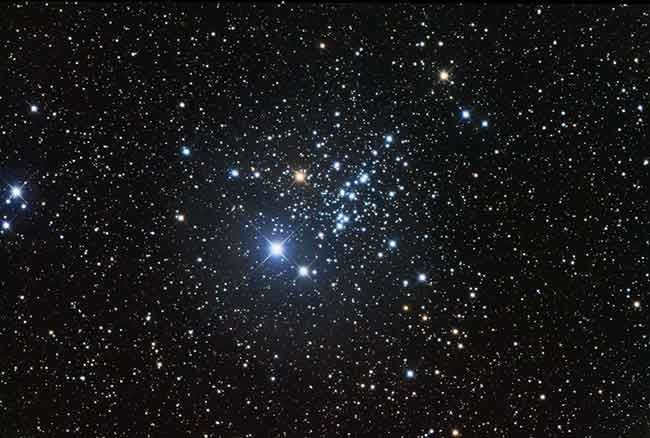
How many stars can you see in the sky when using binoculars?
Let’s consider the Hipparchus scale as a way to determine the number of stars visible through different devices.
When using binoculars, you can observe approximately 200,000 stars. This number remains consistent regardless of location. If you use a regular non-professional telescope, the number increases to about 2 million. However, there are specialized telescopes that can reveal up to 2 billion stars. Many of these stars are not officially named or documented in star catalogs.
Undoubtedly, there exist stunning images displaying an immense number of stars, an immense number of stars simultaneously. However, these images are no longer considered for counting purposes. The accurate figure is determined through mathematical calculations based on our understanding of the Milky Way and its neighboring galaxies.
According to the latest data in 2016, it is estimated that there are between 300 billion and a trillion stars 300 billion to a trillion stars.
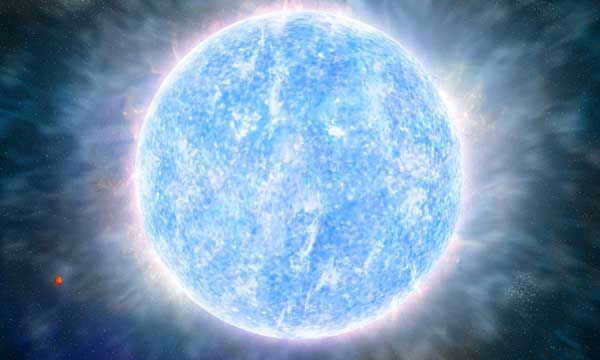
Intriguing facts about celestial bodies
- The star that is closest to Earth is the Sun. In cosmic terms, it belongs to the dwarf star category.
- All stars are composed of the same elements. However, some stars are younger and undergo changes over time, becoming brighter and larger.
- Remarkably, every star maintains a delicate balance. The force of gravity exerts pressure on the star, while internal gas amplifies it. Scientists speculate that any disruption to this balance can cause stars to explode or fade away.
- Stars exhibit various colors due to the amount of energy they possess. Red stars are the most prevalent in the universe.
- The color of a star is determined by its temperature. The coldest stars are red, while yellow stars, like our sun, are warmer. The hottest stars are blue in color.
- Most stars exist in pairs, but they can only be observed through a telescope. To the naked eye, they appear as a single bright dot. However, with the right equipment, you can clearly see two stars orbiting each other rapidly.
- The lifespan of a star is inversely proportional to its size. The larger the star, the shorter its lifespan.
- Scientists have estimated that there are approximately 500 billion galaxies in the universe.
- Traveling to the stars is currently impossible. If we were to attempt a journey to the closest star after the Sun, we would need to consider that it would take over 50,000 years to reach our destination.

Step outside on a dark evening and you would be convinced that there are countless stars sprinkled across the sky. It’s an overwhelming sight, with too many stars to even attempt to count. Some estimates suggest that there could be as many as 10,000 stars visible to the naked eye. However, why rely on guesswork when someone has already done the calculations for us?
Decades ago, astronomer Dorrit Hoffleit from Yale University meticulously created the Yale Catalog of Bright Stars. This comprehensive table includes every star that can be seen from Earth without the aid of telescopes or other devices, making it accessible to the majority of people.
So, just how many stars are actually visible in the night sky?
Is the count of 9,096 stars accurate?
While attempting to determine the exact number of stars in the night sky, scientists have performed calculations and determined that there are approximately 9,096 stars visible throughout the sky. However, since we can only observe half of the celestial sphere at any given time, we would need to divide that figure by two, resulting in 4,548 stars (with some variation depending on the season). Keep in mind that this count is based on the darkest sky imaginable. Personally, I find this number to be quite small when considering the vastness of a desolate night in the middle of nowhere.
From a location at 45 degrees north latitude, we observe approximately half the number of stars as we do at a specific time on a specific night within a year. This equates to roughly 6,800 stars. Although it may seem limited, it is sufficient to create the illusion of a luminous night sky.
However, it is possible that all these countless stars are nearer than they appear. The wonders of the universe surround us, and now you have the opportunity to experience them firsthand.
What is the number of stars visible through a telescope?
When observing the night sky, astronomers use a scale called stellar magnitudes to measure the brightness of stars and planets. This scale is based on the concept that each stellar magnitude is 2.5 times brighter than the previous one. By using this measurement, astronomers can accurately determine the number of stars that can be seen through a telescope.
For example, Altair in the constellation Aquila has a magnitude of about +1, which means it is 2.5 times brighter than a star with a magnitude of 2. A second magnitude star is 2.5 times brighter than a third magnitude star, and so on.
A first magnitude star, such as Altair, is approximately 100 times brighter than a sixth magnitude star. This calculation is based on the fact that each magnitude is 2.5 times brighter than the previous one, so a first magnitude star would be 2.5 multiplied by itself eight times (2.5^8 = 100).
As the star’s magnitude increases, its brightness decreases. Stars that are exceptionally bright are assigned a negative magnitude. For example, Sirius, the brightest star, has a magnitude of -1.4, while Jupiter has a magnitude of -2.5 and Venus holds the highest rank among the planets with a magnitude of -4.4. The full moon is incredibly bright, reaching a magnitude of -12.7, second only to the Sun which has a magnitude of -26.7.

What is the number of stars in the vast expanse of the night sky that can be seen without any optical aids?

Although the naked eye may not perceive a significant number of stars, it is important to consider the impact of light pollution in and around urban areas where most of us reside. In suburban areas, the limit for visible stars is approximately +4 magnitude, resulting in a total of around 900 stars worldwide, which is only half of what you would see in a more remote location.
If we reduce the magnitude limit to +2, which is comparable to the brightness of stars like those in the Big Dipper, we are left with a mere 70 stars worldwide. In other words, a person in downtown Chicago or Boston would only be able to see about 35 stars.
It’s no wonder that city dwellers are enthralled by the night sky when they venture outside of urban areas. The stars are barely visible to those who are constantly surrounded by the pervasive glow of light pollution. However, there are still some exceptionally bright celestial objects that can be observed by those living in metropolitan areas.
If we reverse direction, the numbers of stars increase exponentially because there are a much larger number of dim stars compared to bright ones. So, how many stars are there in a bright sky? With a pair of 50mm binoculars, the standard limit is the ninth star magnitude, allowing a view of 217,000 stars in the sky. Although it is possible to estimate the number of stars in the sky, it is preferable to get even closer to them with the cosmic collection from the Cosmomerch brand.
During my childhood, I always enjoyed climbing to the top of the tallest house and spending hours observing the constellations. I always hoped to witness a falling star or a meteor shower. I even once had the chance to see a starburst. These experiences sparked my interest in stars, leading me to study them in great detail. I constantly found myself wondering about the true nature of stars.
What is a star?
A star is a celestial body composed of gases that maintain their shape due to gravity and have the ability to emit light. Each day, we have the opportunity to witness the presence of the largest star in our solar system, the Sun. It is the light and heat emitted by the Sun that allows life to thrive on Earth. The Sun continues to shine because of the ongoing thermonuclear reactions that convert hydrogen into helium and vice versa. As a result, the star has been radiating heat and light for a significant period of time.
There are several varieties of stars:
- Brown dwarfs – these are stars that have permanently ceased their thermonuclear reactions and are unable to compensate for the energy they have lost;
- White dwarfs– these are low-mass stars that gradually release gases from their surface in the form of stellar winds;
- Red giants are stars that have relatively low temperatures but high luminosity;
- Variable stars are stars that have changed their luminosity at least once;
- Wolf-Ray stars are characterized by high temperature and luminosity. Unlike other stars, their broad spectrum contains compounds of oxygen, nitrogen, and carbon in addition to hydrogen and helium;
- New stars are stars that can occasionally erupt;
- Supernovae can erupt more frequently than “new stars,” thereby dramatically changing their brightness;
- Hypernovae stars refer to the explosion of a massive star after depleting the energy and fuel released by thermonuclear reactions.
The chemical composition and mass are the primary factors that determine all the physical characteristics of a star.
The origin and lifespan of a star
Clusters of gases give birth to stars as they compress under their own gravity. The compression releases heat, gradually increasing the temperature and giving birth to the star’s core. Reactions begin and compression stops when the temperature near the core reaches millions of degrees Kelvin. Thus, the star begins its long life, lasting for millions of years, until the fuel in its core is depleted and all the hydrogen is converted into helium. At this point, the star’s temperature decreases and its luminosity increases, ultimately transforming into a red dwarf. When the core of the star becomes extremely massive, it can no longer support its own weight and starts to collapse. Eventually, the star transforms into a black hole.
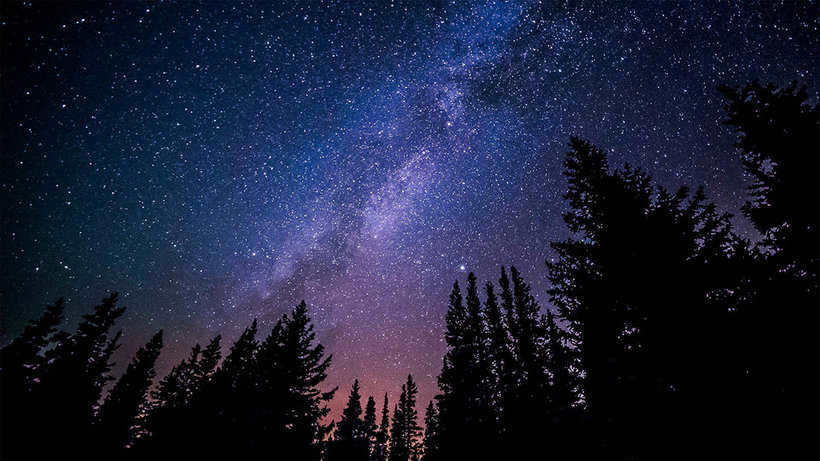
What stars actually are
When I discovered that stars are actually clusters of hot gas and plasma, I was astounded. They appear as shining emeralds in the night sky, but in reality, they are constantly undergoing nuclear reactions. Stars are primarily composed of hydrogen and helium, making them resemble a luminous and heat-producing bomb.
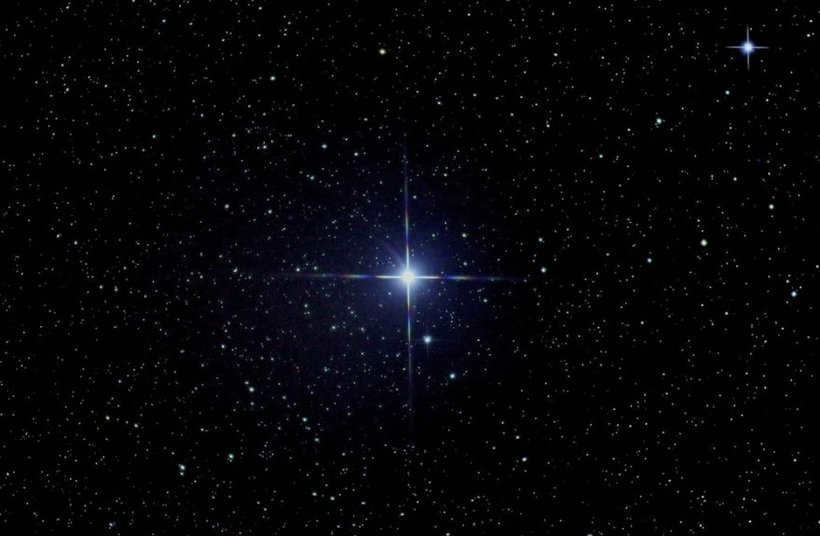
What is the total number of stars in the sky
Unfortunately, determining the exact number of stars in the sky is like searching for a needle in a haystack. No one can provide an accurate count. However, scientists estimate that each galaxy contains over 100 billion stars, but we can only see about 3,000 of them.
By the way, were you aware that stars come in various colors? The different colors of stars include:
- blue;
- blue and white;
- white;
- yellow-white;
- yellow;
- orange;
- red.
Additionally, the color of a star is influenced by its size. It’s important to note that hotter stars appear white and blue, while cooler stars emit orange and red light. If I hadn’t known this, I would have confidently stated the opposite.
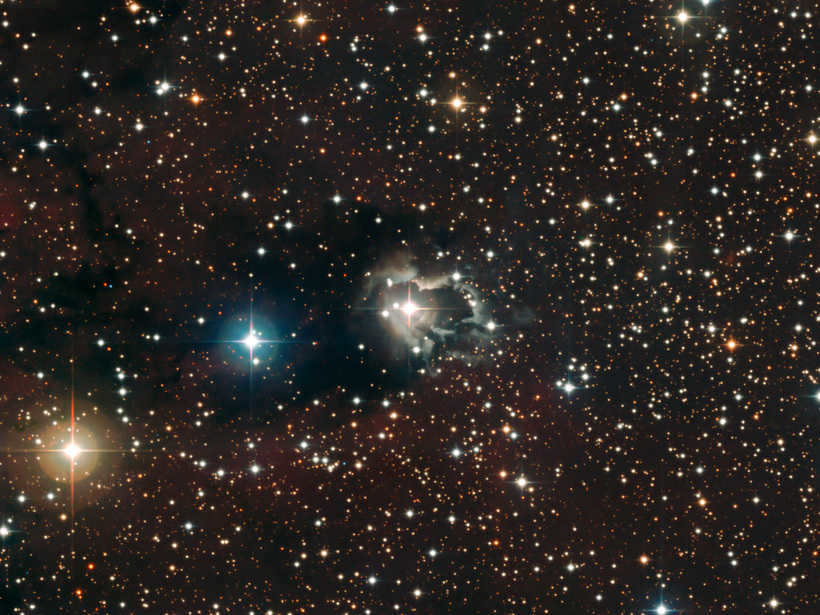
I have witnessed red stars in the celestial sphere on a few occasions, although my acquaintance argued that it was a planet. At that moment, I was unsure who was accurate in their observation. It is worth noting that stars do not truly twinkle – it is merely an optical illusion.
The phenomenon of stars vanishing
Have you ever contemplated why stars plummet from the heavens and where they ultimately go? As it turns out, they simply disintegrate as they descend. This can be likened to a spark from a Bengal firework that burns brightly for a period before gradually fading away. Stars exist for billions of years, and the smaller the star, the more protracted its existence. Consequently, shooting stars have already surpassed their expected lifespan.

Maybe out there in the celestial sphere, there exist those celestial bodies that have vivid memories of the era when dinosaurs roamed the Earth and primitive humans walked its surface. It’s possible that one of these stars illuminates your window every night, isn’t it awe-inspiring?
For countless centuries, humans have gazed up at the night sky, drawn to its allure and captivated by the multitude of sparkling stars.
Even in ancient times, people began to connect the stars, forming constellations and assigning them the names of mythical heroes and creatures.
So what exactly are stars? Ancient philosophers believed that stars were portals in the sky, through which celestial fire cascaded down to Earth. Another belief held that the gods themselves created the stars, placing them in the sky to enhance the beauty of the nighttime heavens.
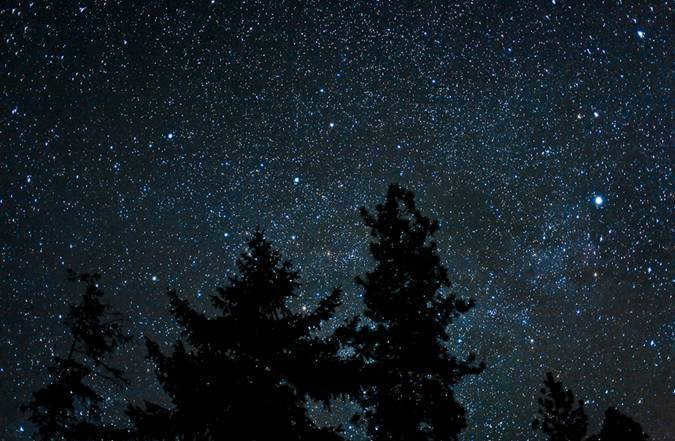
Throughout the progress of humanity, scientific advancements have taken us far, revealing that a star can be described as a luminous sphere of gas soaring through boundless and nearly empty space.
Stars possess various distinguishing characteristics:
· mass,
· size,
· temperature,
· the intensity of their radiation
Nevertheless, the majority of stars derive their energy from the same source – thermonuclear reactions occurring within their core.
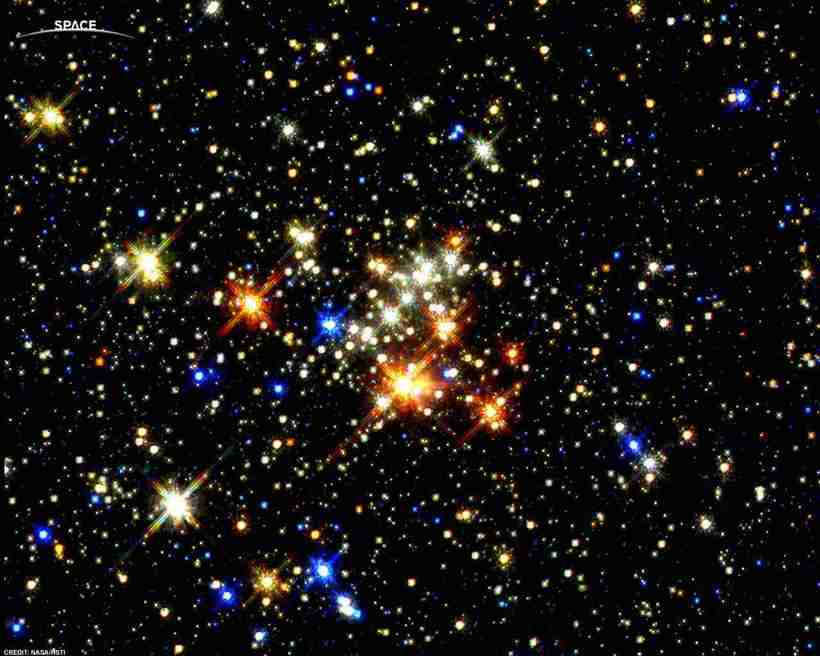
The star that provides life to all organisms on Earth is also known as the Sun. The Sun is positioned at the center of the Solar System, where our planet is situated.
Every star visible in the nighttime sky is a constituent of a vast system, referred to as the Galaxy.
The Galaxy we belong to is named the Milky Way. It consists of numerous billion stars.
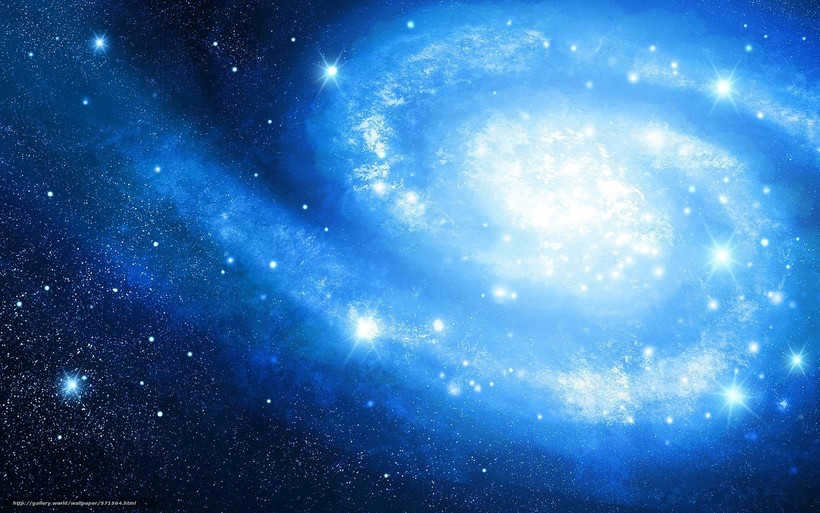
There are countless other galaxies similar to ours in the vast expanse of the universe, but their distance from us makes them invisible to the human eye.
We are fortunate to live in an era of scientific progress, where our understanding of the world, including the cosmos, has significantly advanced. As a result, we can gaze at the stars with more than just a vacant expression.
It has been many years since then, but the memory remains fresh in my mind. My father had a passion for stargazing. Our house had a telescope on the rooftop, and we would often rush to it, much to my mother’s dismay. We could spend hours mesmerized by the stars. However, in the beginning, I had no knowledge of what these celestial objects were. I would always turn to my father for answers, and he would serve as my personal encyclopedia.

What is a star?
A star is a massive, luminous sphere of gas. Stars consist primarily of hydrogen, which interacts with other elements, releasing a tremendous amount of energy that causes them to glow.
The different types of stars reflect their quantitative characteristics, such as mass, chemical composition, and temperature, as well as their current stage of evolution.
Stars can be classified based on their chemical composition:
- Supergiants – These are the largest stars, hundreds of times bigger than the Sun.
- Giants are stars that are many times larger than the Sun.
- Dwarfs include the Sun and stars of similar size, as well as smaller stars.
Constellations add beauty to the night sky.
During the night, while everyone was sleeping, we would gaze out of the window and spend hours looking at the “starry pictures” that unfolded before us. We now know that these are called constellations, and there are 88 of them in the sky. They can remind us of fictional characters from bedtime stories we were told as children, as well as the myths and legends we learned about in history class. To be more precise, a constellation is a group or cluster of stars that forms a specific shape.

The lifespan of celestial bodies
All things in the universe have a finite existence, including stars. The celestial body commonly known as the Sun will eventually reach its end. About 5 billion years ago, the Sun came into existence through the collapse of a dust nebula. Initially, it consisted of two-thirds hydrogen. However, it has since consumed half of that. Consequently, scientists have estimated that the Sun has a comparable number of years remaining.
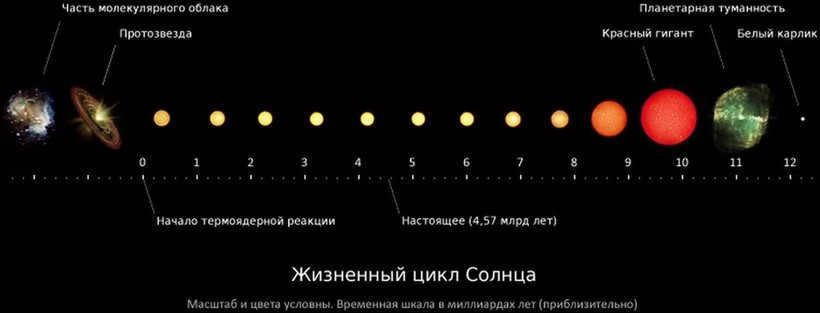
During my early childhood, I remember strolling along a dimly lit street in our small town with my mother. Inquisitively, I turned to her and asked, “Mom, what is that radiant illumination in the sky?”. In response, my mother gently explained, “Those are stars“. It was in that moment that I was introduced to a whole new concept, one that I struggled to fully comprehend at such a young age. However, from that day forward, my fascination with everything related to space only intensified. So, what exactly are these celestial bodies known as stars?

The most well-known stars in the galaxy
There exist an infinite number of stars in the universe. Some are familiar to everyone, while others remain unknown. It’s hard to comprehend the vastness and complexity of these celestial bodies. One example of such an intriguing star is Rigel. When viewed from Earth, it appears as a mere speck of light. However, scientific advancements have allowed us to uncover some of the most astonishing stars:
- Rigel. This star is classified as a blue-white supergiant and is part of the Orion constellation. Rigel is distinctive for its flattened shape and remarkably high luminosity. In ancient Egyptian mythology, Rigel was considered the ruler of the stars and the guardian of the deceased.
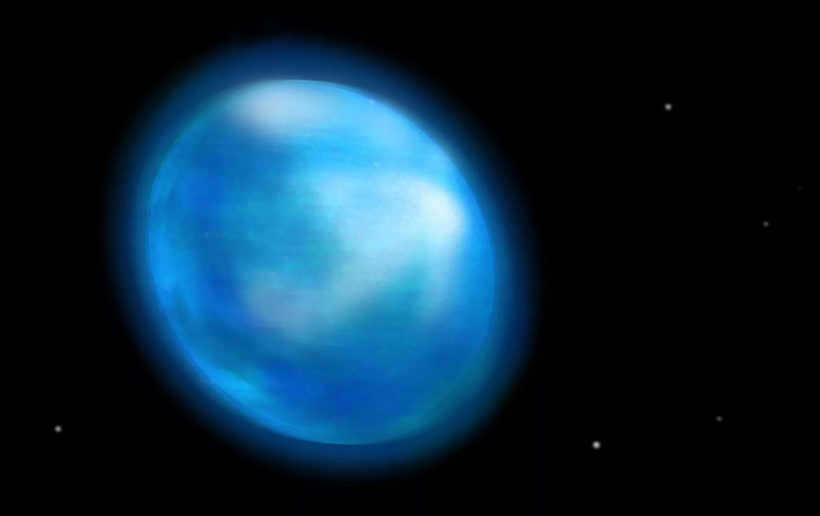
- Vega. The star that is visible in the summer sky for anyone living in the Northern Hemisphere is located in the constellation Lyra. It holds the second position on the list of the most luminous stars in this part of the world. Vega has been extensively researched and is known for its vibrant blue hue. What sets it apart is the presence of a disk composed of dust particles.
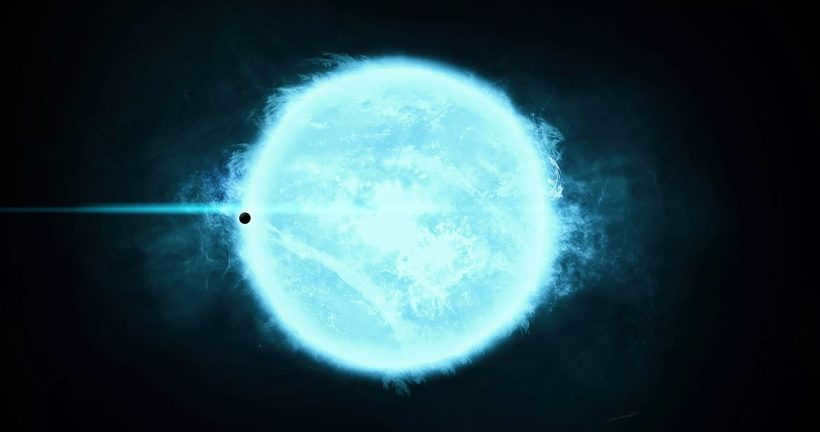
- Diamond star PSR J2222-0137. This star holds the distinction of being the coldest star ever observed. It may seem unbelievable, but its gravitational forces are gradually transforming it into a colossal diamond..
- NGC 2240. This celestial body is regarded as an inadequately researched star due to its vast distance from Earth. It is diminutive in comparison to other stars and emits minimal amounts of visible light; however, it holds the distinction of being the most scorching star in the entirety of the universe!
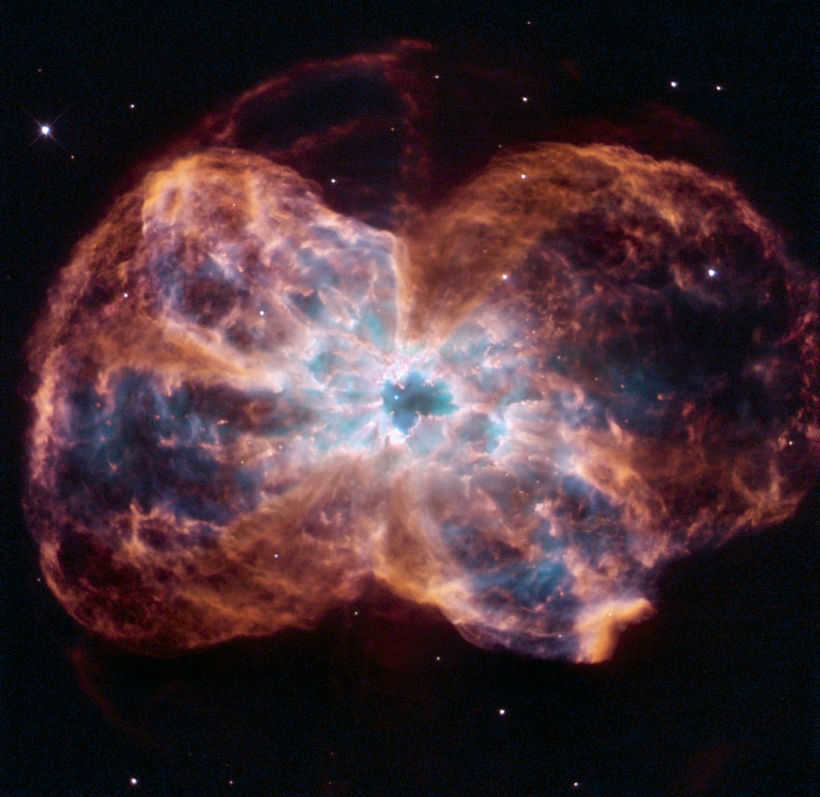
Stars that Resemble Our Sun
Although our Sun may not be the largest, brightest, or hottest star, it is the one that provides us with the essential heat and light that we benefit from at no cost. Furthermore, there are numerous stars in the cosmos that bear a striking resemblance to our very own Sun. These stars include:

- Epsilon Eridanus,
- Tau Cetus,
- Delta Peacock,
- V538 of Ascendant.
Our home star may have planets that are very similar to each other. It’s possible that one of these planets could have the conditions necessary for life to exist.
I never considered this possibility before! Thank you for sharing this valuable article. I will definitely send the link to my wife, as she has been interested in this topic for years.
@Sergey Esbuketov: Welcome to TravelAsk! We appreciate your input, but please note that we do not allow links to external websites in our comments. However, your comment has been edited to still provide useful information to our readers. Thank you for your understanding and cooperation! 🙂
Earthly Observations Unveiled
If stars are hot blobs of gas that constantly undergo explosions to release energy and matter, why does the starlight from the planet flicker? The answer lies in Earth’s atmosphere. The atmosphere is constantly filled with air currents and is inhomogeneous, causing the incoming rays to be distorted as they enter the atmosphere. Instead of following a straight path, the rays are refracted into a zigzag or wavy pattern. When we look at the sky, our eyes capture this distorted signal, resulting in flickering starlight. Surprisingly, scientists have determined that there are approximately 6000 stars visible in the night sky, with 3000 visible from each hemisphere. It’s unfortunate that many people don’t take the time to look up and appreciate the myriad of bright celestial bodies due to light pollution and urban smog. However, there have been instances where the shutdown of factories in certain areas has resulted in a black, star-filled sky. This rare sight has caused panic among some individuals, leading them to report UFO sightings and even fear an alien invasion.
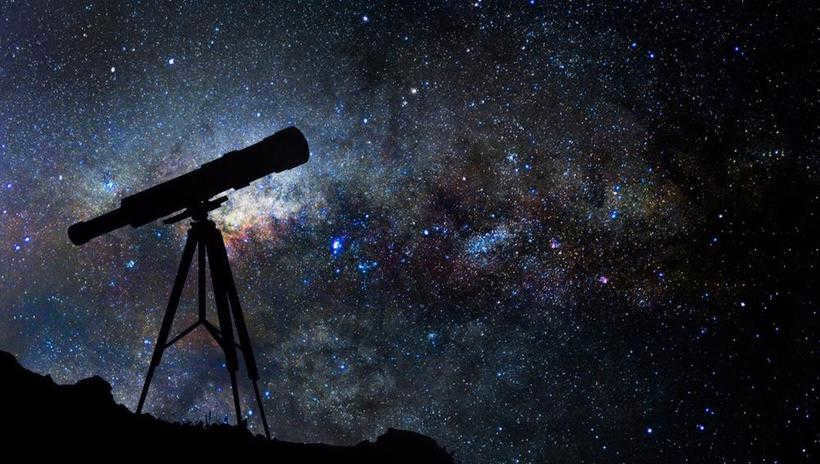
A Flaming Life
Stars are not just gas and energy generators; they are comparable to a living organism. In astronomy, there is a concept known as stellar evolution. Stars originate from clusters of gas and dust, . . .evolve and expand. . .. As they go through their life cycle, stars eventually start to deplete their supply of essential elements. The first one to run out is hydrogen. This results in an increased production of carbon and helium. – causing the star to increase in size. Eventually, it begins to actively shed gas, dispersing it into space as it continues to grow. Towards the end of its development, the star may undergo a transformation:
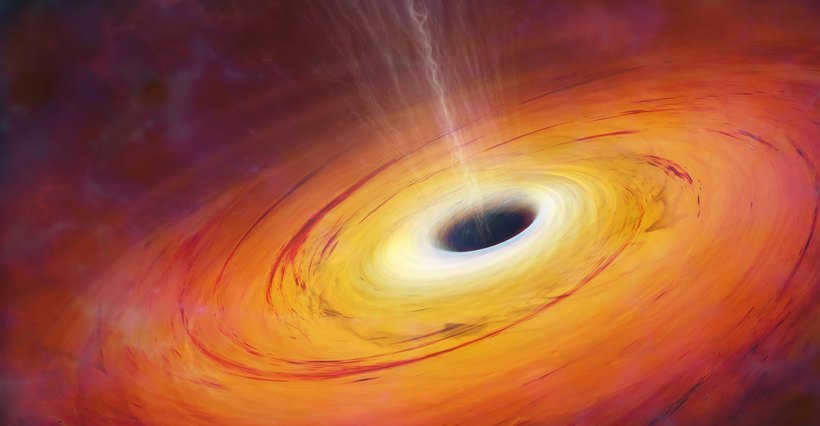
- In the case of a white dwarf, it refers to a compact and small celestial object.
- When it comes to a neutron star or pulsar, it is a cosmic body with high density (a star compressed due to the squeezing of electrons into the nuclei of atoms). Essentially, it can be described as a massive atomic nucleus comprised of electrons and neutrons. A neutron star comes into existence following a phenomenon known as a supernova explosion, which is a sudden increase in the star’s luminosity.
- Regarding a black hole, it represents an entity from which nothing can escape. Absolutely nothing.
Shining from the days gone by
A beam of light or photons (particles of light) possesses an incredible velocity of approximately 300,000 kilometers per second. This velocity is unattainable to perceive with the unaided eye: on Earth, the speed at which light travels is rapid because the typical distance we observe is insignificant in relation to that velocity. However, on a cosmic scale, this is not the case. It requires eight minutes for light to journey from the Sun to the Earth. Therefore, we are observing light that was emitted a few minutes ago. and if the Sun were to suddenly extinguish (rest assured, this cannot occur), we would only become aware of it 8 minutes later, once the remaining sunlight reaches us. The other stars we are able to see are significantly more distant than the Sun and the light from them has been traversing through space for millions of years. We are witnessing light from a distant era. Perhaps these stars have already evolved and possibly even merged with others. To bring the future a bit closer, there exist powerful telescopes that are capable of traversing vast distances and compressing time to observe the past, although not to the extent that we can perceive with the naked eye. This fact has prompted scientists to conduct a couple of hypothetical scenarios:
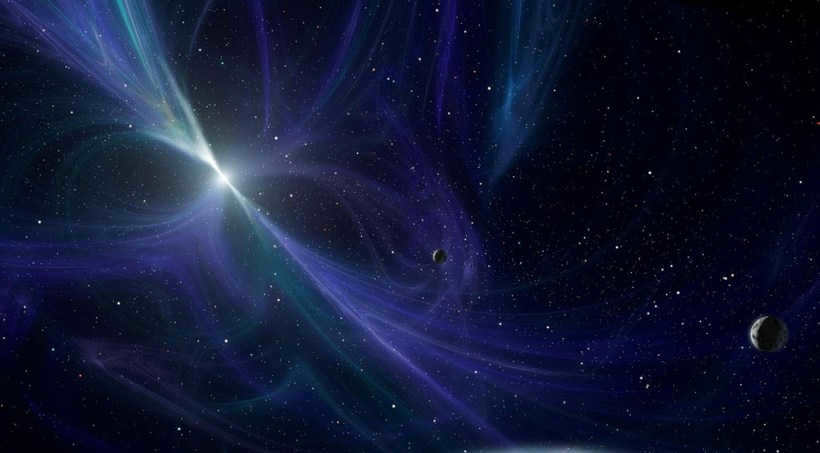
- If a gigantic mirror is erected 10 light-years away from Earth and observed with a telescope, we would witness the events that occurred on the planet 20 years ago. It takes 10 years for light to travel from Earth to the mirror and another 10 years to return.
- If extraterrestrial beings, located approximately 60 to 65 million light-years away, possess the most advanced space exploration equipment, they could potentially observe dinosaurs by pointing their telescopes towards Earth.
The stars serve as our guides to the past. They provide us with insights into ancient times, unveiling the enigmas of the past and recounting the timeless legends of the vast and icy cosmos. Starlight represents the pathway that can transport humans from Earth to far-flung planets, galaxies, and even to the outermost reaches of the universe. There is still much for humanity to comprehend about these radiant celestial entities, and who knows, perhaps we will soon witness the unraveling of a new stellar enigma.
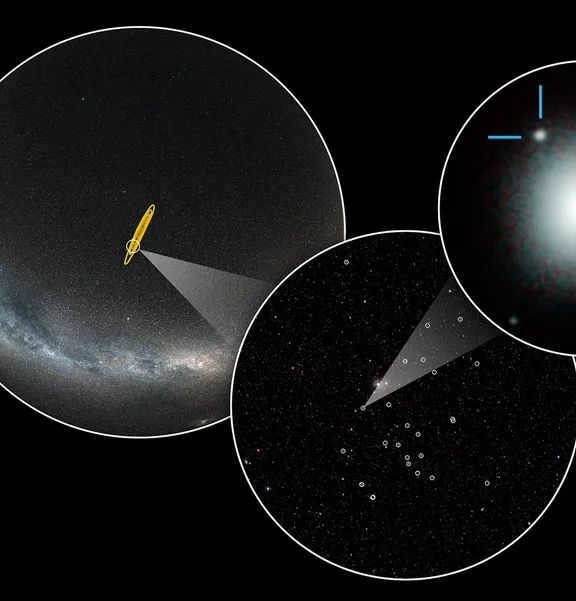
What is the number of stars in our galaxy?
How many stars have been discovered by science?
Many people are curious about the precise number of stars that astronomers have identified and how many of them exist in our galaxy. Rather than speculating, we seek accurate data based on scientific measurements and observations of celestial bodies.
One of the most comprehensive contemporary star catalogs is the USNO-B1.0, which is also included in the Consolidated Astronomical Register of Celestial Bodies (ICHB) represented by “ROSASTRONOMIA” in Russia. This catalog covers the entire night sky and provides information on approximately 1.1 billion stars, including those with extremely low magnitudes of up to 21.
If we set aside philosophical speculations about countless stars in the Universe, this represents the ultimate count of stars that mankind possesses with scientific precision in the 21st century, utilizing state-of-the-art tools for observing the Universe, such as the Hubble, Gaia, and JWST telescopes! Furthermore, this figure encompasses the overall quantity of stars, encompassing not just those within our own galaxy!
There is a significantly smaller number of stars compared to the number of individuals!
Altogether, it turns out that a person can observe slightly over 1.1 billion stars by utilizing state-of-the-art astronomical instruments, including space-based satellites such as Hubble.
At present, the Earth is inhabited by over 8 billion individuals, and if each person had a star in the sky named after them, the UN Population Fund predicts that by the year 1820 when the global population reached approximately 1.1 billion, there would be no stars left to be named. An entire 200 years ago, the entire celestial sphere would have been fully occupied, and those presently alive would never have had the opportunity to eternally mark their name upon it!
If we were to observe each individual on Earth for one second, it would take over 250 years to go through everyone. Conversely, if we were to observe each scientifically confirmed star in the Universe for one second, we would exhaust the supply in less than 35 years. The reality is that there are eight times fewer discovered stars in the Universe than there are humans on Earth!
There is just one star for every eight individuals!
So, who gets to claim it?
Interestingly, there are hundreds of times fewer stars in the Universe than there are individual tablets, TVs, cars, or cell phones that people purchase and replace every few years.
If you want to find out more about auctions selling stars and the rights of inheritance, please click on this link.

Stars that can be observed with the naked eye
When you find yourself in the darkness, far away from the blinding lights of cities, the night sky reveals a breathtaking spectacle of numerous stars scattered across the vastness of the Milky Way. Attempting to count them all seems impossible – the numbers are mind-boggling, ranging from millions to billions. So, let’s explore the question – how many stars can we actually see in the night sky?
We often hear that there are countless stars in the observable Universe. However, there is an important detail to consider – this is merely a theoretical estimation, and in reality, a person can only witness a minuscule fraction of them.
It all comes down to brightness, or stellar magnitude – faint stars in close proximity appear brighter than extremely powerful ones in the distance. The lower the stellar magnitude, the more visible the star becomes from Earth!
The difference in brightness between any five star magnitudes is 100 times. It is found that the visibility of 1st magnitude stars in the sky is approximately 100 times greater than that of 5th magnitude stars. Compared to 1st magnitude stars, 11th magnitude stars are 10,000 times fainter. And if you consider a 21st magnitude star, its brightness is 100 million times less than that of a 1st magnitude star.
There is a limit beyond which even the most observant human eye cannot detect a star in the sky.
The average human eye can perceive 6th magnitude stars. The specific magnitude can range from 6 to 8 magnitudes, depending on visual acuity and the darkness of the sky.
Each star is 2.5 times more luminous than the previous one.
The difference in brightness between any five magnitudes is approximately 100 times.
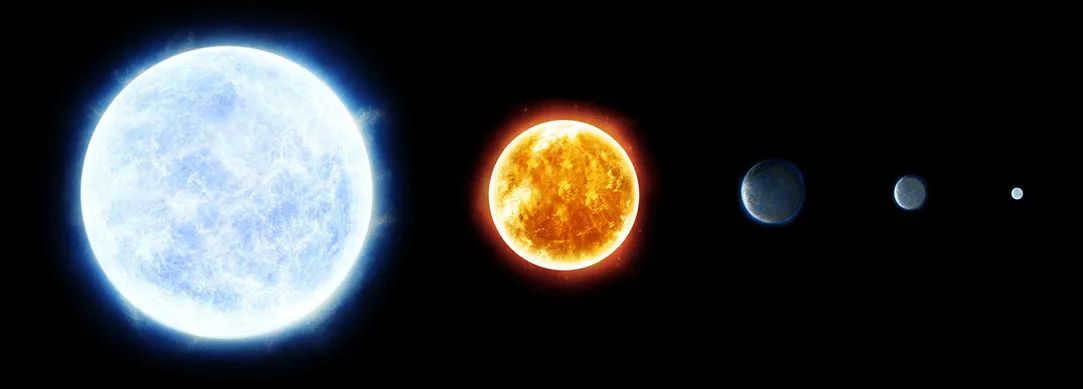
There is a significantly smaller number of visible stars compared to the total number of stars.
In both hemispheres, the naked eye can spot 9032 stars. However, this is just a fraction of the vast number of stars that theoretically exist in the sky. Under the most favorable conditions, a person can only see a few thousand stars!
As we already know, the celestial sphere is divided into two hemispheres, with roughly half of the stars visible in each hemisphere, amounting to approximately 4500 stars.
Furthermore, some stars are located near the horizon, making them difficult to observe as they are obstructed by the dense atmosphere. Additionally, the reality of an imperfectly flat horizon further limits the number of stars that can be simultaneously seen to around 2250.
Considering that the average length of a night throughout the year, at any location on the planet, is approximately 12 hours, it can be deduced that we are only able to observe around half the total number of stars in the sky simultaneously – a mere 1129 stars visible to the naked eye!
In the renowned work of the Alexandrian astronomer Claudius Ptolemy (2nd century BC), commonly known as the “Almagest”, there existed a catalog consisting of 1022 stars, whose positions were meticulously recorded by astronomers of that era. Millennia have passed, yet the human eye remains unchanged. Thus, the figure of 1022 stars should be considered as the most accurate estimate of the number of stars observable without the aid of any instruments under ideal circumstances!

REMEMBERING FOR FUTURE GENERATIONS
As the visibility of a star increases (whether through a telescope, binoculars, or with the naked eye), the number of stars without designated names decreases, resulting in a higher price for purchasing a star name. Take a look at the prices for naming stars.


All these figures are accessible in optimal observational conditions – that is, during a dark night without the presence of the moon. The reality is that the sky appears brighter in the summer compared to the winter, and any source of city illumination creates a glow that diminishes the amount of visible stars.
In the midst of a bustling metropolis, the quantity of stars visible in the sky dwindles to a mere 200 or 300!
Therefore, the most favorable view of the stars can only be obtained in the winter, at a distance of at least 5 kilometers away from any settlement or lit roadway.
To witness a greater number of stars, one must venture far beyond the city limits and invest in specialized equipment – telescopes, telescopes, telescopes, or binoculars. How does one go about selecting a telescope for observing specific magnitudes of stars?
By using high-quality binoculars, the count of stars that can be sighted in the night sky outside urban areas significantly rises to 9,000.
P.S. Please take into account that the astrophotographs displayed on our website are captured with extended exposure times that are not perceivable to the naked eye. This is the reason why they exhibit an abundant number of stars.


TAKE A CHANCE
TAKE A CHANCE ON NAMING A STAR
Until recently, only scientific organizations and their scientists had the authority to name celestial objects.
However, in order to promote the study of astronomy, the general public has been granted the opportunity to participate in the naming process.
The chance to name a star is currently available to everyone for a limited time, as part of a charitable project aimed at popularizing astronomy among the public.
Don’t miss out, as the campaign to involve the general public in naming celestial bodies may not be extended beyond 2024!
It is important to note that if you successfully name a celestial body, it will forever bear the name of your choice and will be forever recorded in the history of space exploration by humanity! Read more.

NUMBER OF STARS
IN TERMS OF MAGNITUDES
VISIBLE AT NIGHT
IN THE NORTHERN HEMISPHERE
Information is accurate
as of 2021.
There are a total of 1129 stars visible to the naked eye, with a magnitude of up to 6.99.
Out of these, only 606 stars do not have public names yet.
7.930 billion people
claim
to name 1 star
visible to the naked eye
within the city limits
1.982 billion people
claims
♪ to name 1 star ♪
283 million people
claims
to name 1 star
32 million people
aspire
to be named 1 star
24 million people
aspire
to be named one star
15 million people
aspire
1 star
8.5 million people
aspire
1 star
3.33 million people
aspire
1 star
810,000 people
pretend
1 star
There are 273,000 individuals who aspire to name 1 star.
169,000 people pretend to name 1 star.
57,000 people also pretend to name 1 star.
22,000 people pretend to name 1 star, as observed through space telescopes orbiting the Earth.
11,000 people claim to name 1 star.
5,000 people claim to name 1 star.
Modification in the Price of Naming Celestial Objects
As per global regulations, the administrative charge for the privilege of naming a celestial object with a name chosen by the client is contingent upon the quantity of celestial bodies accessible for naming and their unique attributes. The cost is reevaluated on a daily basis depending on the reduction in the number of similar celestial bodies available for naming with comparable properties and features.
Since this initiative is philanthropic in nature and aims to engage the general public in utilizing the outcomes of astronomical research and the process of naming celestial bodies, a research-based dynamic pricing approach is being implemented to gauge the demand. Based on the results of this assessment, the price list is expected to be revised in the near future, potentially resulting in a significant increase.
Please be aware that the cost of naming celestial bodies can increase dramatically, sometimes by tens or even hundreds of times, due to the competitive auction system involving numerous bidders from around the world.
It is important to note that the item being offered is already halfway sold.
The fluctuating cost of naming celestial bodies
Under international regulations, the fee for the opportunity to name a celestial body is determined by the number of available bodies and their unique characteristics. This fee is recalculated daily based on the decreasing availability of celestial bodies with similar properties and characteristics.
Due to the charitable nature of this project, which aims to attract the general public to the use of research findings in the field of astronomy and the process of naming celestial bodies, we have implemented a dynamic pricing system to assess demand. Based on the results of this evaluation, we anticipate a significant increase in our price list in the near future.
Please note that the cost may increase by tens or even hundreds of times, as we will be using an auction system that takes into account the number of bidders from around the world who are interested in naming celestial bodies.
It is worth mentioning that half of the available naming opportunities have already been sold.
© Noel Du Faille

Today, we will explore the vast number of stars that exist in our universe.
The cosmos is an awe-inspiring and boundless realm. Regrettably, the naked eye cannot perceive its entire magnificence. Instead, we are able to witness only the stars that adorn the night sky. The sight of these countless luminous spheres never fails to captivate us. It is almost certain that at some point in our lives, each one of us has pondered the true quantity of stars that exist. Therefore, let us delve into this question in today’s discussion.
Throughout history, humans have gazed up at the night sky in search of constellations that are steeped in legend, pondering what lies within those distant and unexplored worlds. Naturally, astrologers have always sought to answer the question of just how many stars populate the heavens.

- The ancient Greek astronomer Hipparchus, who lived 2500 years ago, was the first to attempt to count the stars. Not only did he tally them, but he also compiled a comprehensive catalog that categorized 1025 celestial luminaries based on their size and location in the sky.
- And now we have the knowledge that stars exist not just in the sky, but also far beyond it. Furthermore, we comprehend that they create numerous distinct Galaxies, and these Galaxies, in turn, shape the boundless Universe. Visualizing this concept is a difficult task for us. Our minds struggle to grasp the idea of infinity in the form of specific celestial illuminations. Despite their distance, these lights are tangible entities with immense proportions and serve as colossal sources of energy.
- All the stars we are able to observe from Earth with our naked eyes represent merely a minuscule fraction of our Galaxy, known as the Milky Way, which encompasses an estimated 200-400 billion stars.
- On a pitch-black moonless night, in a remote location outside the urban landscape, we are able to witness a maximum of 2,000 to 2,500 stars in our field of vision. Moreover, the entire expanse of the sky, encompassing both the southern and northern hemispheres, presents us with the possibility of beholding approximately 5 thousand celestial entities. However, when utilizing binoculars, the number of visible stars increases significantly to around 200 thousand, and with the aid of a high-powered telescope, this figure skyrockets to an impressive 100 million.
- It is impossible for a single individual to observe such a large number of stars simultaneously. Only half of this quantity is visible to the naked eye. This phenomenon is attributed to the decreasing transparency of the atmosphere as one approaches the horizon. Additionally, the visibility of stars is diminished in urban environments. In heavily populated cities, one may only be able to spot a few dozen celestial bodies in the night sky. This is primarily due to excessive artificial lighting and street lamps, which create a backlighting effect that hampers star visibility.
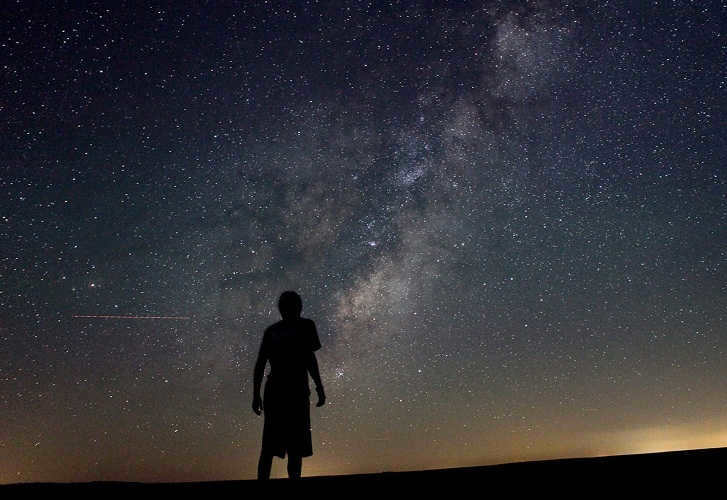
The classification of stars is based on their magnitude, specifically their apparent brightness. The stars with the highest brightness are classified as first magnitude stars, those slightly less bright are second magnitude stars, and the faintest stars visible to the naked eye are classified as seventh magnitude stars. Additionally, with the use of a powerful telescope, it is possible to observe stars with magnitudes ranging from 29 to 30.
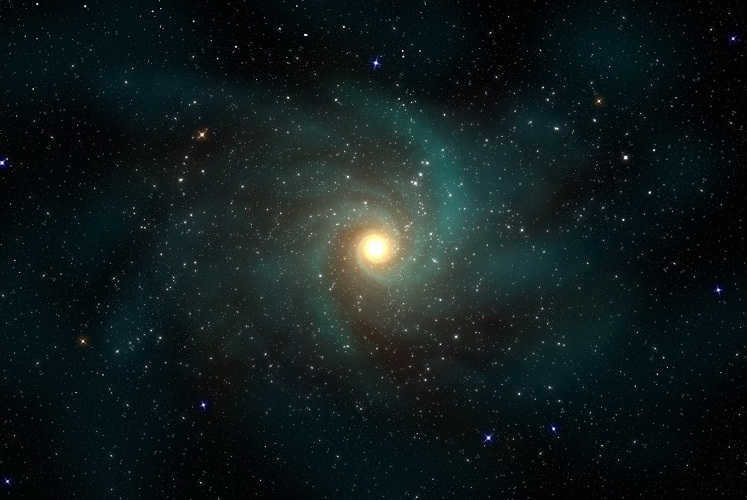
- The advancement of astronomical exploration and the invention of new, highly advanced telescopes has enabled scientists to identify approximately 100 billion galaxies solely in the observable region of the Universe. The largest among them is home to a staggering 100 trillion stars.
- And when combined, according to rough approximations by astronomers, that number is mind-bogglingly large, with twenty-four zeros! However, these galaxies exist beyond the optical range of telescopes, making it nearly impossible to determine the precise count of stars in the Universe, and it is unlikely that an exact figure will ever be determined.
What factors influence the visibility and quantity of stars?
However, when it comes to the question of how many stars are in the sky, it’s important to note that the view we have of the night sky is not an accurate representation. This is due to the vast distances involved in the cosmos, which are measured in light years.
- For instance, the closest star to Earth, Proxima Centauri, is located 4.5 light years away. This means that the light we see from it today actually left the star 4.5 years ago.
- Furthermore, the nearest galaxy to us – the Great Magellanic Cloud – is a staggering 163,000 light years away! To put this in perspective, it takes sunlight just 8 minutes and 19 seconds to travel from the Sun to Earth. When considering the entire visible universe, it spans an incredible size measured in billions of light years!
It is often said that when we gaze at the sky, we are actually peering into the past. This is because the light of the stars that we see has traveled for thousands, millions, or even billions of years before reaching us. It is possible that the stars themselves no longer exist or have undergone significant changes since the light was emitted. This is because every star follows its own life cycle in which they are born, explode, burn out, and eventually die. Yet, we continue to observe their enduring light for an extended period of time.
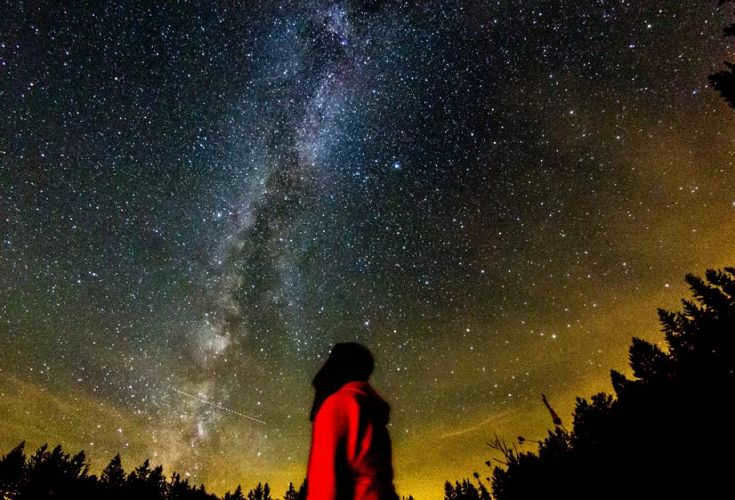
- Scientists have observed flashes of exploding stars, known as supernovae, and the stages leading up to this process, in other galaxies. These events are brief on a cosmic scale, but relatively long in terrestrial terms.
- While explosions of supernovae in our own Galaxy have not been witnessed since the invention of the telescope, scientists believe that Betelgeuse, one of the brightest stars visible in our sky, is in the stage preceding an explosion. However, due to its distance of 560 light-years from Earth, we are seeing it as it appeared over five hundred years ago.
- Thus, it is highly likely that the star has already vanished, and soon we will witness the aftermath of its explosion, which will illuminate a significant portion of our Milky Way galaxy, and its reflection will appear as a “second Sun” in our sky. However, there is also a possibility that it will explode in the near future, and only our distant descendants will have the chance to witness it after hundreds of years.
- Furthermore, the positioning of stars in the sky is not entirely accurate, as their light takes time to reach us. During this time, the stars, if they are still alive, would have moved relative to the Earth and to each other by a substantial number of light years.
In addition, the portion of the heavenly sphere that is visible to us is merely a projection of the stars in relation to our specific location. If we were able to observe the stars from a different planet or galaxy, we would witness an entirely distinct panorama. As a result, the query regarding the total number of stars in our universe remains unanswered and unresolved.





